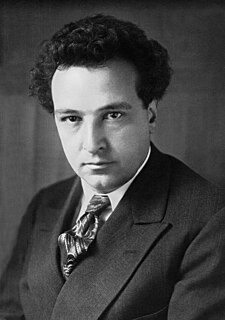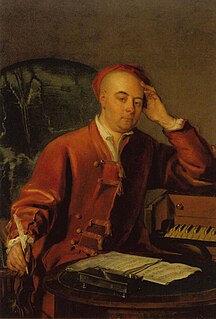Related Research Articles

The Concerto for Orchestra in F minor, Sz. 116, BB 123, is a five-movement orchestral work composed by Béla Bartók in 1943. It is one of his best-known, most popular, and most accessible works.

Edward Elgar's Cello Concerto in E minor, Op. 85, his last notable work, is a cornerstone of the solo cello repertoire. Elgar composed it in the aftermath of the First World War, when his music had already gone out of fashion with the concert-going public. In contrast with Elgar's earlier Violin Concerto, which is lyrical and passionate, the Cello Concerto is for the most part contemplative and elegiac.
A London Symphony is the second symphony composed by Ralph Vaughan Williams. The work is sometimes referred to as Symphony No. 2, though the composer did not designate that name for the work. First performed in 1914, the original score of this four-movement symphony was lost and subsequently reconstructed. Vaughan Williams continued revisions of the work into its final definitive form, which was published in 1936.
The Piano Quartet in A minor, or more exactly the Quartet Movement for Piano, Violin, Viola and Cello in A Minor, by Gustav Mahler is the first movement to an abandoned piano quartet and the composer's sole surviving piece of instrumental chamber music.
The Piano Concerto in C is a concertante work by Ralph Vaughan Williams written in 1926 and 1930-31. During the intervening years, the composer completed Job: A Masque for Dancing and began work on his Fourth Symphony. The concerto shares some thematic characteristics with these works, as well as some of their drama and turbulence.

The First Symphony of the Russian composer Alfred Schnittke was written between 1969 and 1974. Scored for a very large orchestra, the symphony is recognised as one of Schnittke's most extreme essays in aleatoric music: from the outset the piece is loud, brash and chaotic, and it imports motifs from all parts of the Western classical tradition.
The Symphony No. 9 by Alfred Schnittke was written two years before his death in 1998. As a result of paralysis following a series of strokes, the manuscript was barely readable, and a performing edition was made by Gennady Rozhdestvensky. Schnittke was dissatisfied with Rozhdestvensky's edition, and following his death his widow Irina Schnittke sought to have a reconstruction made that was more faithful to the manuscript. Nikolai Korndorf was first engaged to perform the task, and following his early death the manuscript was passed to Alexander Raskatov. Raskatov not only reconstructed Schnittke's Ninth but also wrote his own composition: Nunc dimittis – In memoriam Alfred Schnittke, which was performed after the symphony in the premiere recording conducted by Dennis Russell Davies.

The Concerti Grossi, Op. 6, or Twelve Grand Concertos, HWV 319–330, are 12 concerti grossi by George Frideric Handel for a concertino trio of two violins and violoncello and a ripieno four-part string orchestra with harpsichord continuo. First published by subscription in London by John Walsh in 1739, in the second edition of 1741 they became Handel's Opus 6. Taking the older concerto da chiesa and concerto da camera of Arcangelo Corelli as models, rather than the later three-movement Venetian concerto of Antonio Vivaldi favoured by Johann Sebastian Bach, they were written to be played during performances of Handel's oratorios and odes. Despite the conventional model, Handel incorporated in the movements the full range of his compositional styles, including trio sonatas, operatic arias, French overtures, Italian sinfonias, airs, fugues, themes and variations and a variety of dances. The concertos were largely composed of new material: they are amongst the finest examples in the genre of baroque concerto grosso.
The Musette, or rather chaconne, in this Concerto, was always in favour with the composer himself, as well as the public; for I well remember that HANDEL frequently introduced it between the parts of his Oratorios, both before and after publication. Indeed no instrumental composition that I have ever heard during the long favour of this, seemed to me more grateful and pleasing, particularly, in subject.
The Symphony No. 5 by Walter Piston was composed in 1954.
The Third Symphony by Alfred Schnittke was his fourth composition in the symphonic form, completed in 1981.
Benjamin Britten's Piano Concerto, Op. 13, is the composer's sole piano concerto.

The Symphony No. 4 by Swiss composer Arthur Honegger is a work for orchestra, written in 1946 on a commission from Paul Sacher. Subtitled Deliciæ Basilienses, it was first performed on 21 January 1947, by the chamber orchestra Basler Kammerorchester under Sacher. On the same program were the premieres of two other works commissioned by Sacher: Igor Stravinsky's Concerto in D and Bohuslav Martinů's Toccata e due Canzoni.

The Concerto Grosso No. 1 was the first of six concerti grossi by Soviet composer Alfred Schnittke. It was written in 1976–1977 at the request of Gidon Kremer and Tatiana Grindenko who were also the violin soloists at its premiere on 21 March 1977 in Leningrad together with Yuri Smirnov on keyboard instruments and the Leningrad Chamber Orchestra under Eri Klas. It is one of the best-known of Schnittke's polystylistic compositions and marked his break-through in the West.

The Concerti grossi, Op. 3, HWV 312–317, are six concerti grossi by George Frideric Handel compiled into a set and published by John Walsh in 1734. Musicologists now agree that Handel had no initial knowledge of the publishing. Instead, Walsh, seeking to take advantage of the commercial success of Corelli's Concerti grossi, Op. 6, simply combined several of Handel's already existing works and grouped them into six "concertos".

The Concerto for Viola and Orchestra is a viola concerto by Soviet and German composer Alfred Schnittke. It was written in the summer of 1985. Its dedicatee is viola player Yuri Bashmet, who gave the work its world premiere with the Royal Concertgebouw Orchestra conducted by Lukas Vis at the Concertgebouw in Amsterdam on 9 January 1986.
Symphony No. 6 by Russian composer Alfred Schnittke was composed in 1992. It was commissioned by cellist and conductor Mstislav Rostropovich and the National Symphony Orchestra of Washington, who together gave its first performance in Moscow on 25 September 1993.
Russian composer Alfred Schnittke's Symphony No. 8 was composed in 1994. Its dedicatee Gennady Rozhdestvensky conducted the Royal Stockholm Philharmonic Orchestra in the symphony's premiere in Stockholm on 10 November 1994.

Alfred Schnittke composed his Concerto Grosso No. 3 for two violins, harpsichord, piano, and celesta in 1985.
The Symphony No. 2, or 'Cello Symphony is a composition for orchestra by the American composer Ellen Taaffe Zwilich. The work was composed in 1985 on a commission from the San Francisco Symphony. It was first performed on November 13, 1985, by the San Francisco Symphony under the direction of Edo de Waart, to whom the piece is dedicated.